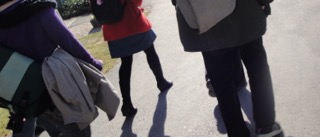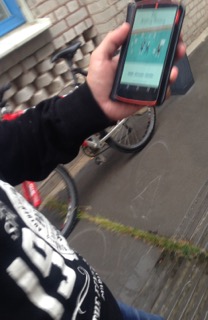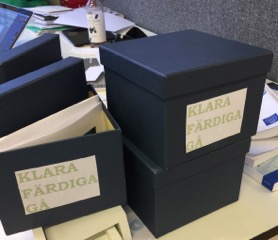Rörelse i tankarna
AFA Försäkring har beviljat medel till projektet Rörelse i tankarna - Ett designperspektiv på fysisk belastning och vila vid vardaglig människa-datorinteraktion.
På de flesta företag är datorer, läsplattor och smarta telefoner viktiga arbetsredskap. Många förväntas, på gott och ont, att bära tekniken med sig och vara redo att ta hand om arbetsuppgifter på resande fot, i hemmet och på andra platser. Trots att man investerat i metoder och produkter för att främja fysisk aktivitet under arbetstid, pekar flera forskningsresultat på att vi är stillasittande så till den grad att det påverkar vår hälsa negativt. Oavsett om vi arbetar på kontor eller på café verkar vi sitta ner.
Syftet med projektet ”Rörelse i tankarna” är att utforska, generera kunskap och verka för att själva datorinteraktionen och miljön runt denna, utformas med hänsyn till individens behov av en växelverkan mellan fysiska belastning och avlastning. Framför allt vill vi bygga kunskap och få till stånd en tvärvetenskaplig dialog och en kritisk diskussion om rörelsens utrymme i en digitaliserad framtid. Området är viktigt då långvarigt stillasittande och fysisk inaktivitet har en klart negativ inverkan på hälsa och välbefinnande.
Projektet ”Rörelse i tankarna” bygger på samverkan mellan forskare och praktiker. Projektets medlemmar och samarbetspartners har erfarenhet och kompetens inom användar-centrerade metoder, deltagande design, ergonomi, standardiseringsarbete, interaktionsdesign och programmering. Projektet samarbetar med de kontakter som erhållits genom tidigare fältstudier i verkliga arbetsmiljöer. Projektet samarbetar med Interaktiva Institutet i Umeå för design och prototyper och pågår mellan april 2015 och november 2017.
Partners: Interactive Institute Swedish ICT: Fredrik Nilbrink Nigel Papworth, Ambra Trotto, Jeroen Peeters,
KTH, Media technology and interaction design: Helena Tobiasson, Jan Gulliksen
Project: Meeting to GO
Matter of Movement at the Office and Outdoor for Virtuous Explorations and Experiences

Many professions has transformed into office-work. Sitting in front of a computer screen interacting with digital material through touchpads and keyboards is commonly seen, as is attending sedentary meetings. Work-tools such as laptops, tablets and smartphones are described as mobile but the interaction tends to mainly be performed sedentary.
One of the major societal challenges today is low levels of physical activity and sedentary behavior due to its negative impact on health and wellbeing in the long run.
Method
We approach this area from a design-oriented perspective and explore ways to support walking meetings through the development of non-intrusive technology. We use of theories, methods and notions such as gamification, physical activity, physical literacy when developing technologies enhancing motivation to be physical active during different office work settings. Within the project there are competence in interaction design, embodied interaction and Movement Acumen Design –including percipience, insightfulness, and sensitivity in, for, and through movement (Tobiasson, 2015).
Data from a pre-study is guiding the design and we have developed and in small scale tested a first prototypeof a walking-meeting support system. Functionalities included has been setting up a meeting structure on a smart-phone. You can invite peers to the meeting, take photos, notes and they are stored in a database. The user-feedback we received included perspectives on the actual interaction:
- You don't want to walk holding a phone all the time
- The quality of the sound is too low
- Note-taking should be done through speech-to-text
- It is unstable - hard to rely on the technology
For the second version of the prototypewe addressed the feed-back from the first version including flic (a blue-tooth button) to address the issue of holding the smartphone, a software for supporting speech-to-text interface and a better microphone. Next step will be to further test and receive feed-back on the second version. We are opening up Meeting to GO for master student projects. If you are a student within Interaction design, User Experience and Usability, Computer Science or Sustainability - give us a call and we meet up and discuss possibilities for collaboration. The project will end in June 2017.




Partners
The project are coordinated by KTH and collaborating with the Interactive Institute in Umeå and different workplaces in the region.
People involved are mainly:
- Helena Tobiasson KTH, Media Technology and Interaction Design
- Jan Gulliksen KTH, Media Technology and Interaction Design
- Fredrik Nilbrink, Interactive Institute, Swedish ICT
Funding
"Meeting to GO" is part of the research and development (Forskning och Utveckling FoU) project Med Rörelse i Tankarna –funded by afa Insurance, ending November 2017, described above.

